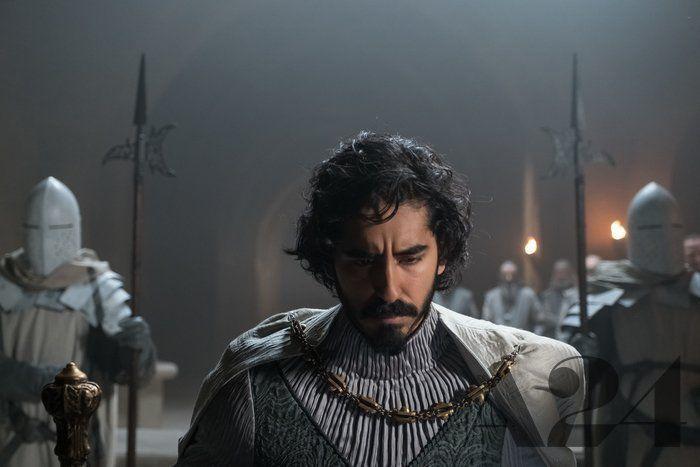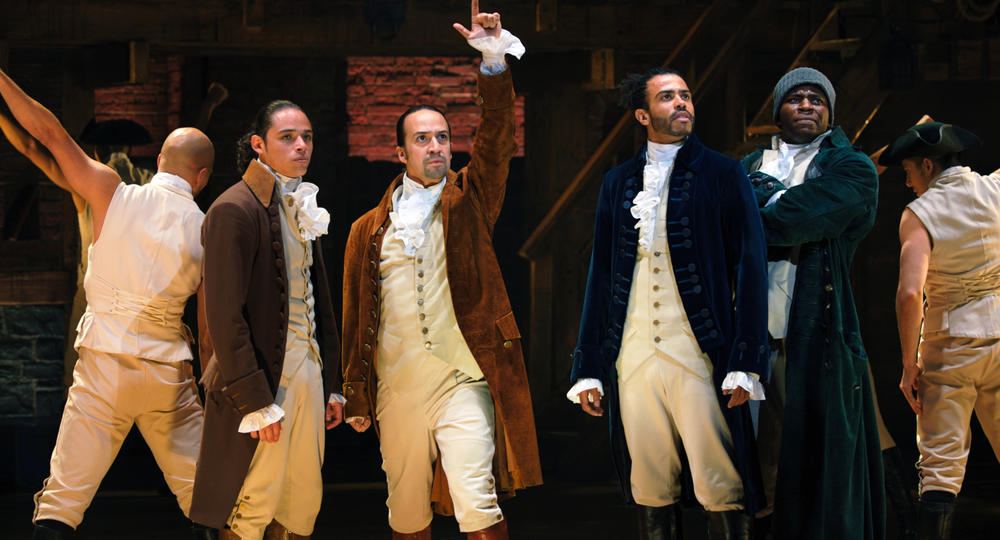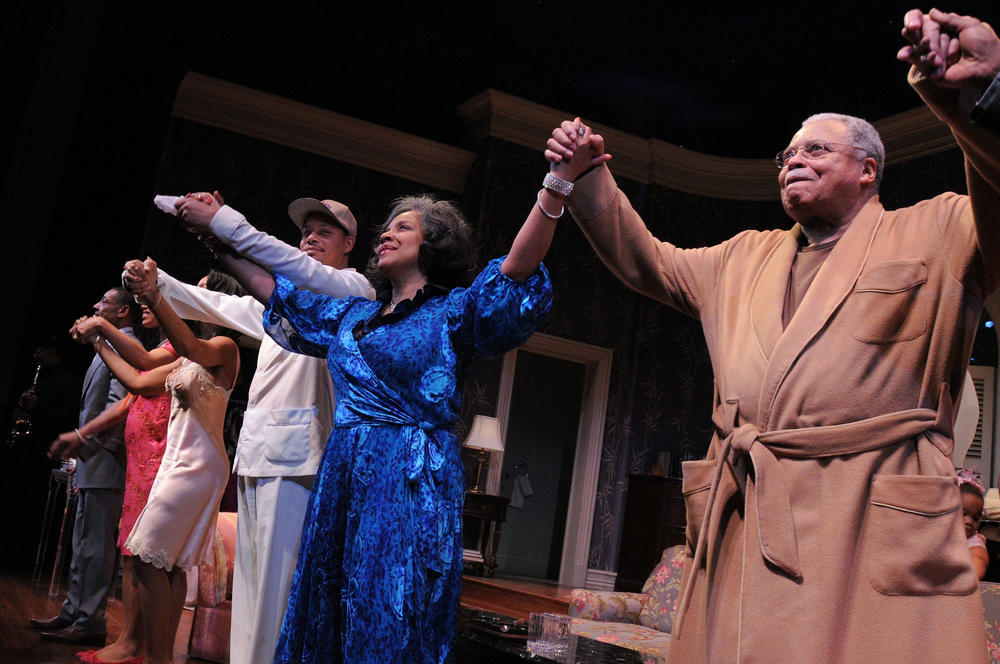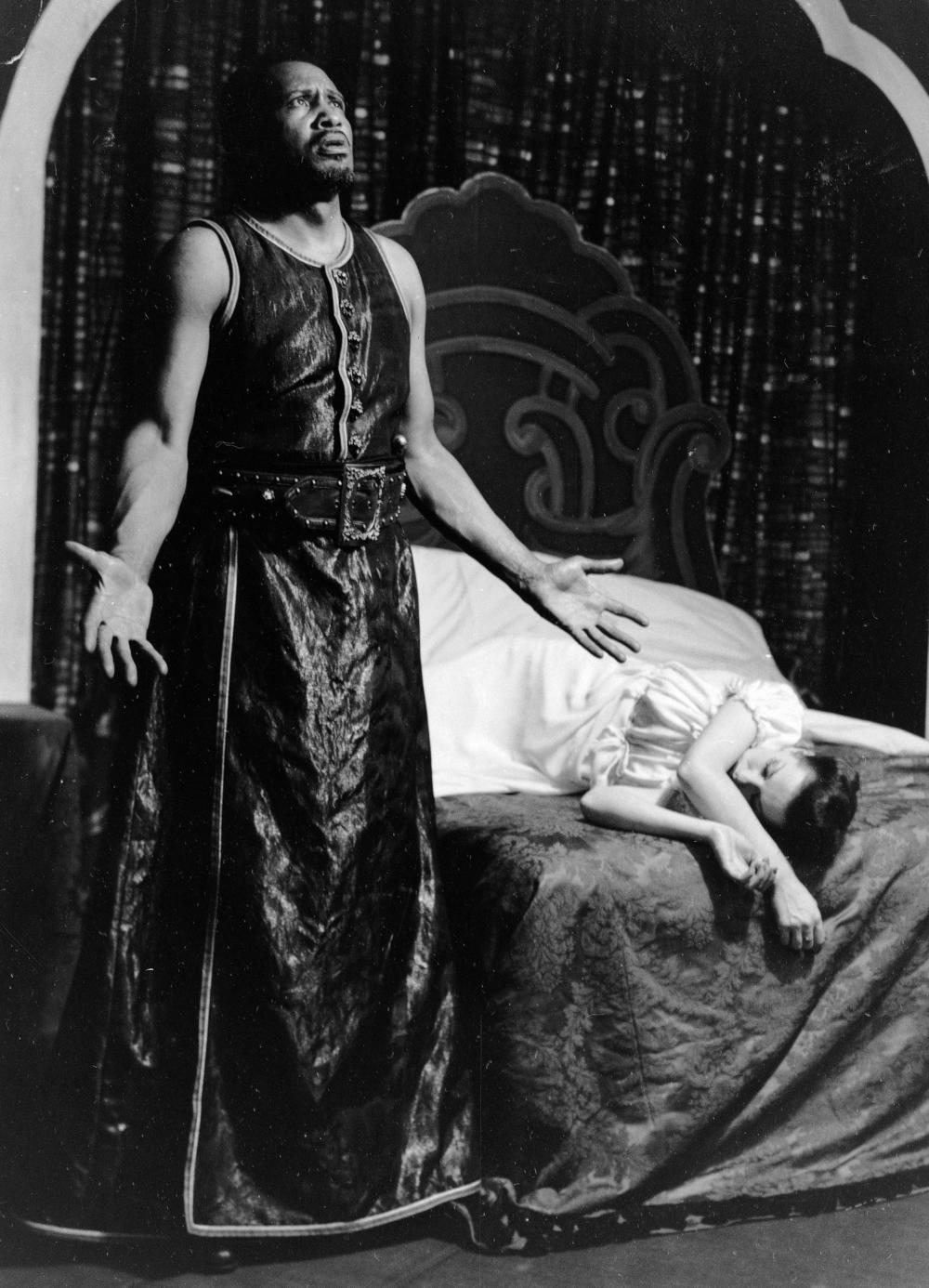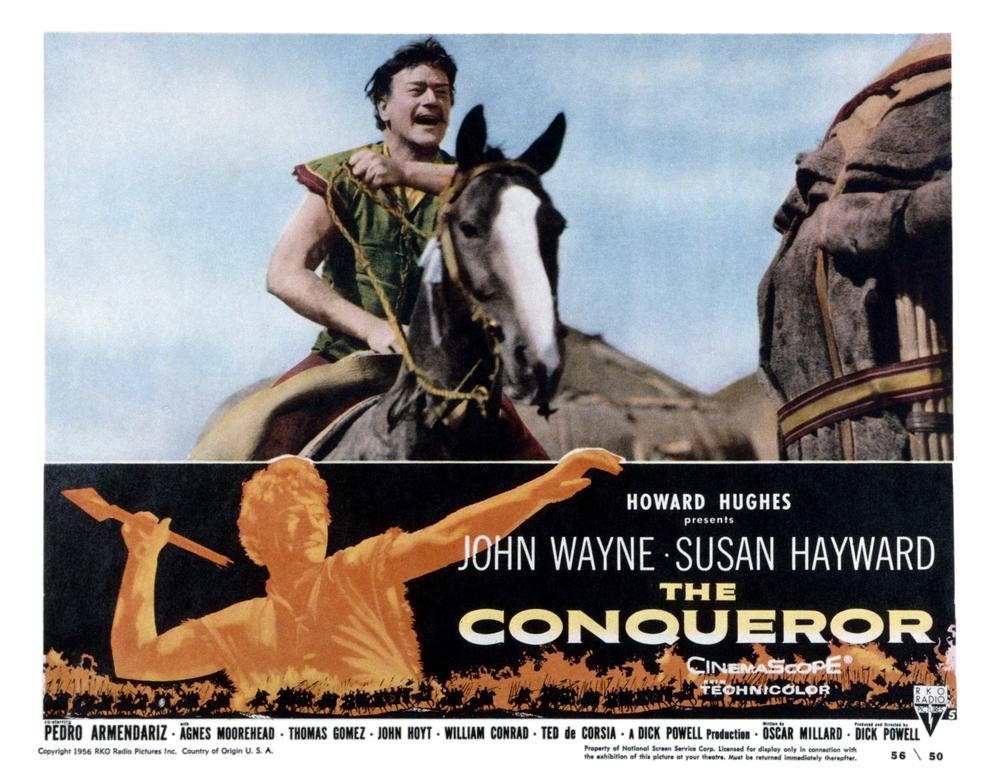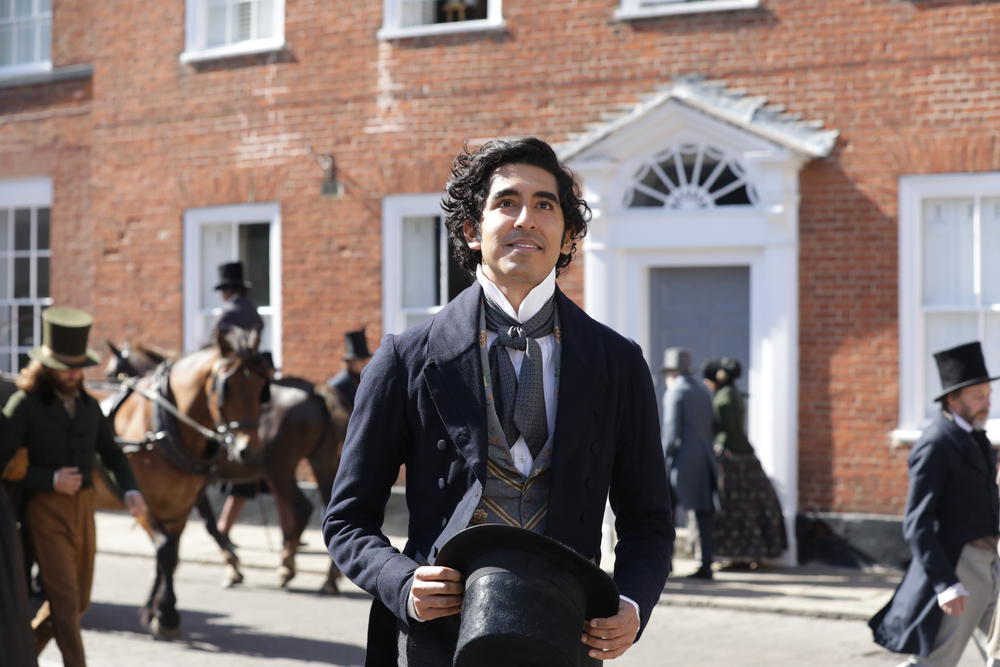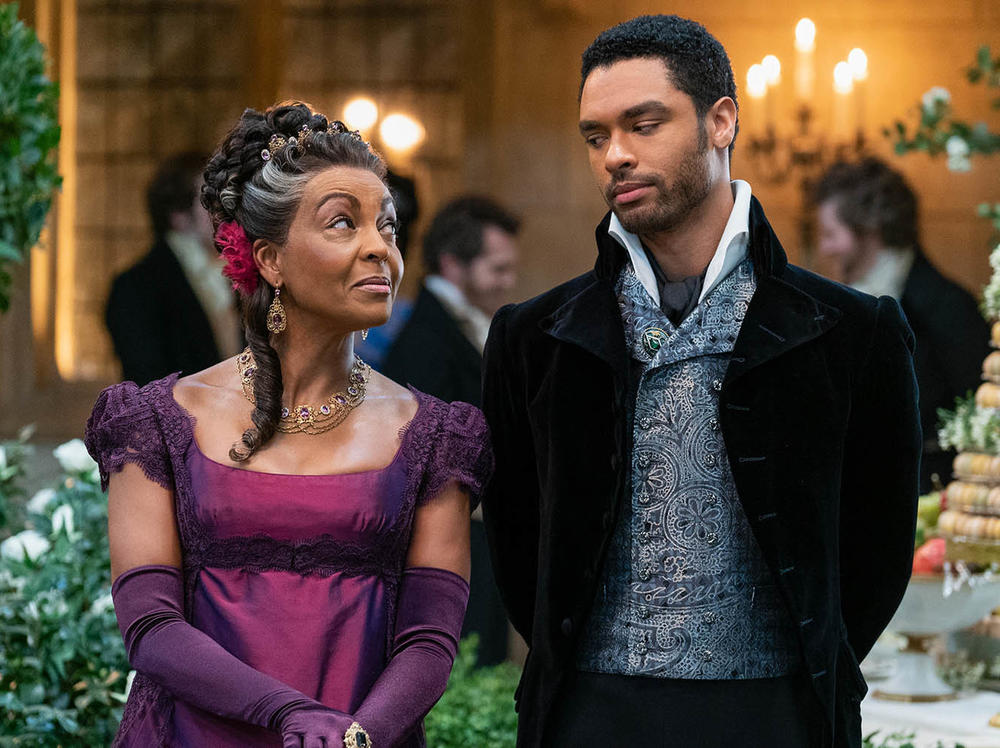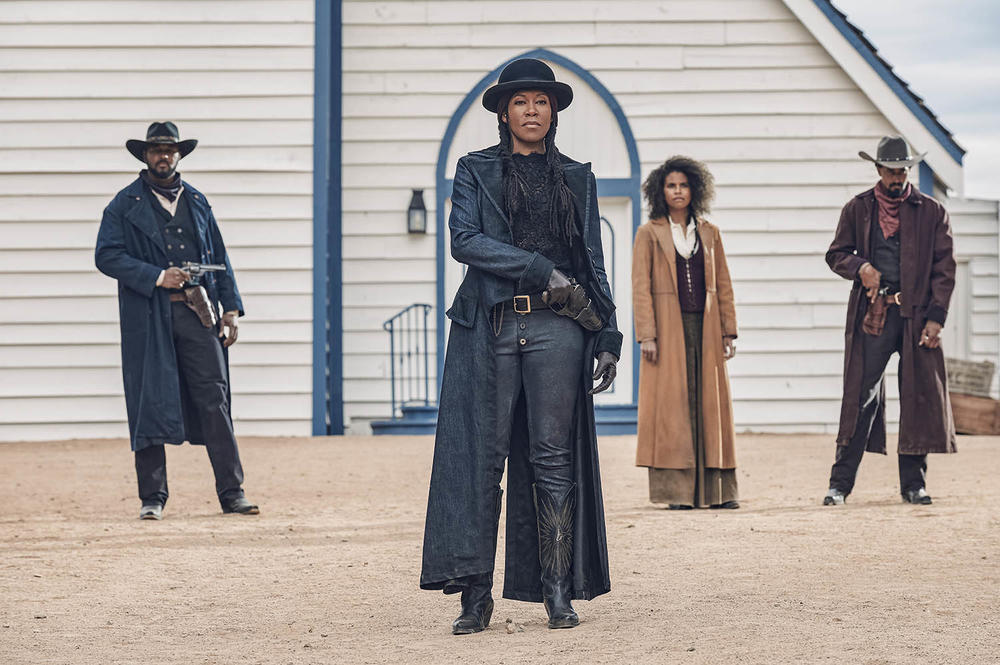Section Branding
Header Content
The Only 'New' Thing About Cross-Cultural Casting Is Who's Getting The Roles
Primary Content
From the debates and the hype on social media about unconventional casting choices lately, you might think the world was about to spin off its axis.
If Slumdog Millionaire star Dev Patel takes a seat at the Round Table in The Green Knight, does that mean King Arthur recruited knights of Indian descent in the 12th century?
And is Mindy Kaling really voicing the brainiac title character in a Scooby-Doo spinoff called Velma? And producing it too?
And didn't casting Jamaican British actress Jodie Turner-Smith as the doomed wife of King Henry VIII in the British miniseries Anne Boleyn violate some unspoken rule about historical realism?
"For what it's worth," wrote The Guardian's Lucy Mangan in a review of that last opus, "I am aware that Anne Boleyn wasn't black, but I'm also aware that she wasn't Claire Foy, Merle Oberon, Helena Bonham Carter or any of the other women who have played her over the years, and my brain is not unduly upset by any of it."
What Mangan could have added is that social media dithering over these announcements is at best misguided, since cross-cultural casting is about as old as casting itself.
Audiences have a long history of suspending disbelief
In the fifth century B.C., when the Greek playwright Aeschylus needed a top-notch defense attorney for his leading tragedian in the trilogy The Oresteia, he settled on the god Apollo.
Not to put too fine a point on it, but this is not a choice a playwright would make if he were worried about verisimilitude in casting. And why would he be? Live theater has always assumed the audience can make imaginative leaps, whether it's depicting a deus ex machina, a warrior king who rants or Founding Fathers who rap.
Hamilton, of course, is a special case: a Broadway musical famous not just for putting hip-hop in the mouths of Thomas Jefferson and George Washington, but for matching Black and brown faces to those historic white characters.
For composer-lyricist Lin-Manuel Miranda, that casting decision was baked into the show's content from the moment he decided that the characters would rap.
"Hip-hop was uniquely suited to telling Hamilton's immigrant narrative," he told Fresh Air's Terry Gross. "And it's incredibly meaningful to then populate our live show with Black and brown artists ... because hip-hop is a Black art form and, also, it's our country too."
"Every time I write a piece of theater, I'm trying to get us on the board."
Inclusion became Hamilton's calling card, and diverse audiences soon made it a worldwide phenomenon, an outcome that seems natural in retrospect but that flew in the face of decades of theater practice.
Theatrical white privilege at play
In 1986, when the performers union Actors' Equity convened the first National Symposium on Non-Traditional Casting, it noted that more than 90% of actors who had been hired in the U.S. in the previous five years were white. And it presented scenes designed to help theater-makers consider other possibilities: in Tennessee Williams' Cat on a Hot Tin Roof, for instance, James Earl Jones as Southern patriarch Big Daddy, opposite white actor Stephen Collins as his son Brick.
New York magazine critic John Simon did not see this scene, having pointedly declined to attend the symposium, but he told NPR's Carole Zimmer at the time that the whole notion struck him as ridiculous.
"You cannot create the illusion of a Joan of Arc with a Black actress," he stated flatly. "It doesn't work, unless they can make themselves up to 'pass.' But this they can no longer do because their ethnic pride forbids it."
To be clear, Simon had no problem with Jeanne d'Arc, who was burned at the stake at age 19 in France, being played by an actress in her 30s, in English. For him, skin color was the one deal-breaker.
His attitude regrettably held sway for years despite the efforts of the symposium's attendees to make dents in the armor of white theatrical privilege. It would be decades before Jones finally got to play Big Daddy for a paying crowd. But then, actors of color were used to waiting, even for roles for which they were ideally suited.
Choosing blackface over Black actors
Take Othello, arguably the most famous Black character in theatrical history. Shakespeare penned his tragedy in 1603, and it's rife with references — "an old black ram / Is tupping your white ewe" — to the title character's African origins.
Would it surprise you to know that it took more than two centuries before the part was played in England by a Black actor? New Yorker Ira Aldridge was the first, having relocated to London because in the early 1800s, Black actors couldn't get work on American stages.
The reaction? British critics had a problem with Aldridge's Othello because of his race(!) — in the absence of Black English actors, they'd grown accustomed to the Moor being played as a light-skinned Arab.
Times would change, casting choices too, but slowly. When the great African American actor Paul Robeson played Othello in the 1930s, he was the exception, not the rule. And things moved slower still on-screen.
Orson Welles was one of many white actors to play the Moor in blackface on film and television more than a century after Aldridge. Laurence Olivier was nominated for an Oscar for playing him in blackface in 1965. Anthony Hopkins played him on television in 1981 to general acclaim.
Big screen, but limited imagination
In Hollywood, cultural appropriation was common and strictly a one-way street: always white performers darkening their skin to play characters of color, even when those characters were historical figures — Genghis Khan, say, portrayed in The Conqueror (1956) by John Wayne with a gunslinger's swagger and a Midwestern drawl.
Surely there was an Asian actor who was a better fit for that Mongol warrior, but never mind — Burt Lancaster had just played the title character in Apache, and no one had batted an eye.
Even after that sort of grotesquerie became untenable, exceptions were made for white actors in the classics. And if the film industry saw fit to hand Othello, the theater's most famous Black leading role, to the likes of Olivier and Hopkins, what hope could actors of color have for roles not specifically conceived for them — say, a Black James Bond?
That's a question Idris Elba has been fielding for so long that he has more or less aged out of contention. And sure, he has the detective miniseries Luther, as well as a place in both the Marvel Cinematic Universe and the DC Extended Universe, to console him. But as big a star as Elba is, was anyone auditioning him when he was in his 30s to play Mr. Darcy? There's a whole world of literary parts he's unlikely ever to be considered for.
New possibilities in a new generation
It's something you might also have said until recently about Slumdog Millionaire star Dev Patel. Imagine him being cast in Dickens? Preposterous, until it happened. Director Armando Iannucci decided on colorblind casting for The Personal History of David Copperfield, filling the screen behind Patel's dashing Dickensian hero with Black aristocratic mothers of white sons, Asian fathers of Black daughters — giving the film's world far more diversity than even mid-empire London would have possessed. It interferes with the storytelling not at all, and, says Iannucci, it offers opportunity evenhandedly.
"There is such a lot of talent there," he told an interviewer shortly after the film's premiere at the Toronto International Film Festival. "And Dev himself said, normally in a film like this he'd be carrying a tea tray, standing at the back. And for a man of his talent and ability, that's just tragic to think that that's a possibility."
Color-blind casting of the sort that Iannucci is practicing is one way to counter that.
Another is color-conscious casting, where roles are assigned nontraditionally to make a point. That's what producer Shonda Rhimes did in the Emmy-nominated Bridgerton, desegregating costume drama by using the real Black ancestry of Britain's Queen Charlotte (wife to King George III, who just a few years before the ones depicted in the series had been dealing with those pesky American revolutionaries depicted in Hamilton) to imagine a Black British aristocracy in waistcoats and petticoats.
"We were two separate societies divided by color," says Adjoa Andoh's Lady Danbury," until the king fell in love with one of us."
She sees this as evidence that love conquers all. Her nephew, Simon, who has been dallying with the show's white leading lady, is skeptical.
"The king may have elevated us from novelties in their eyes to, now, dukes and royalty. And at that same whim, he may just as easily change his mind."
And there's always the risk that something similar could happen with nontraditional casting. Which is why the last few months have been so bracing — Bridgerton, Copperfield, Anne Boleyn. Later this month, Dev Patel's Sir Gawain will quaff ale with King Arthur in David Lowery's The Green Knight. As the weather cools, Elba, Regina King and Delroy Lindo will head a star-studded Black cast in The Harder They Fall, an attempt to reclaim the Western.
And before year's end, Denzel Washington will star opposite Frances McDormand in a presumed awards-contender: Shakespeare's The Tragedy of Macbeth, directed by McDormand's husband, Joel Coen.
Macbeth is a role that Ira Aldridge — that first Black Othello in the 1800s — had to wear white makeup to play. So there has been progress, though it has certainly been long in coming — more opportunity always on the way, but just out of reach.
"Tomorrow," as Washington will soon intone. "And tomorrow, and tomorrow ..."
Bilal Qureshi edited this story. It was produced for broadcast by Kelli Wessinger.
Copyright 2021 NPR. To see more, visit https://www.npr.org.
Bottom Content

